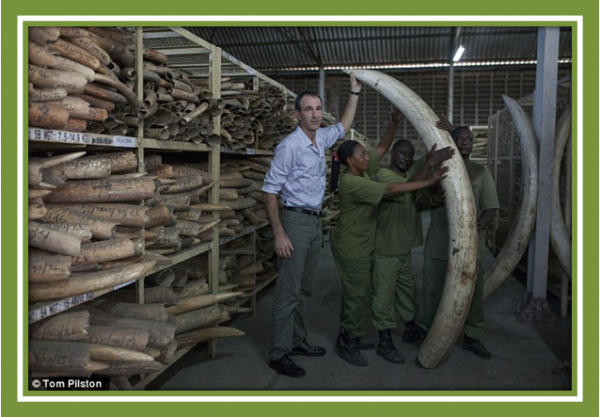|

No living elephant carries these kinds of tusks in Tanzania
Those are the numbers published in a new study published in the Proceedings of the National Academy of Sciences. The article states:
“Poachers killed an estimated 100,000 elephants across Africa between 2010 and 2012, a huge spike in the continent's death rate of the world's largest land mammals because of an increased demand for ivory in China and other Asian nations, a new study published Monday found.
Warnings about massive elephant slaughters have been ringing for years, but Monday's study is the first to scientifically quantify the number of deaths across the continent by measuring deaths in one closely monitored park in Kenya and using other published data to extrapolate fatality tolls across the continent.
The study — which was carried out by the world's leading elephant experts — found that the proportion of illegally killed elephants has climbed from 25 per cent of all elephant deaths a decade ago to roughly 65 per cent of all elephant deaths today, a percentage that, if continued, will lead to the extinction of the species.
China's rising middle class and the demand for ivory in that country of 1.3 billion people is driving the black market price of ivory up, leading to more impoverished people in Africa "willing to take the criminal risk on and kill elephants. The causation in my mind is clear," said the study's lead author, George Wittemyer of Colorado State University.”
So where do we stand?
Let’s begin with some facts.
- Nobody knows how many elephants remain in Africa. We hear numbers ranging between 400,000 to 600,000. Such numbers seem to give comfort to organizations like CITES and the IUCN because there are still plenty of elephants to be “sustainably utilized”.
- Some countries, like Zimbabwe and Tanzania, still insist that elephants should be trophy hunted despite the huge declines in populations. Never mind that the average elephant only carries tusks weighing about 11kg these days. Never mind that the Selous elephant population has been hammered by poaching and that there are only 13,000 left now compared to 70,000 five years ago. The Selous is 80% occupied by hunting concessions.
- There are two elephant species in Africa. Everyone except geneticists seem to ignore this fact. There are forest elephants (Loxodonta cyclotis) and savannah elephants (Loxodonta africana). Ignoring that fact ignores the real plight of African elephants.
- Elephant mortalities are not fully reported. A recent aerial survey of elephants in the Mara/Serengeti ecosystem in Kenya/Tanzania found 117 carcasses in the Mara. Many of those had not been entered into the official Kenya Wildlife Service statistics. The article says 100,000 elephants poached, but the number is likely to be much higher as elephants poached are not fully reported in well-monitored areas like the Mara and not at all reported in more remote areas.
- Demand reduction might be working to some degree, but it is clearly not the fast answer required. China and Thailand and Angola and Zimbabwe and DRC must stop selling ivory locally. There should be a complete ban on ivory sales everywhere to stop the slaughter. Corrupt officials in source and consumer countries are not going to be defeated except by a complete ban. More rangers and better law enforcement are also not going to work fast enough.
- And let’s not fuel the fires by countries that have ivory stockpiles demanding of CITES that they should be granted rights to sell.
The 1989 ivory ban worked well. Elephant populations recovered as ivory could not be sold legally anywhere. But a slow creep came back, including legal sales approved by CITES, internet sales, “antique” sales.
Let’s all go back to 1989. Sorry China and Thailand, you can live without ivory chopsticks.
Picture credit: Tom Pilston
If you have not already signed up to our mailing list, you can add your name here and keep up to date with our ongoing work and, most importantly, DONATE to support our work to conserve the remaining fragile lion populations. Thank you.
|




